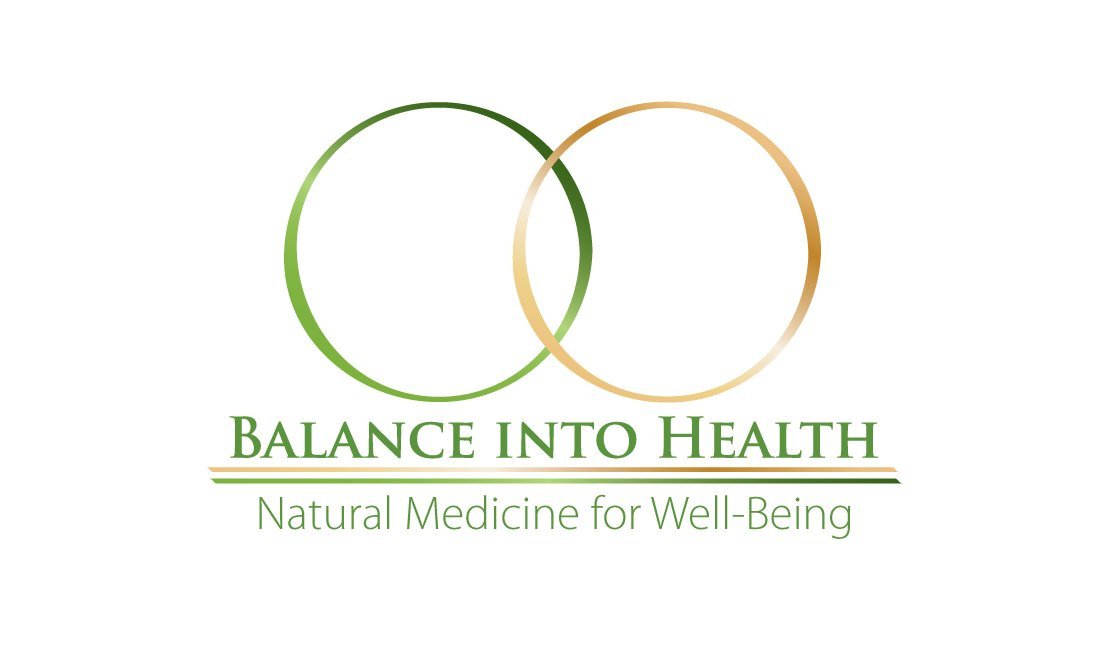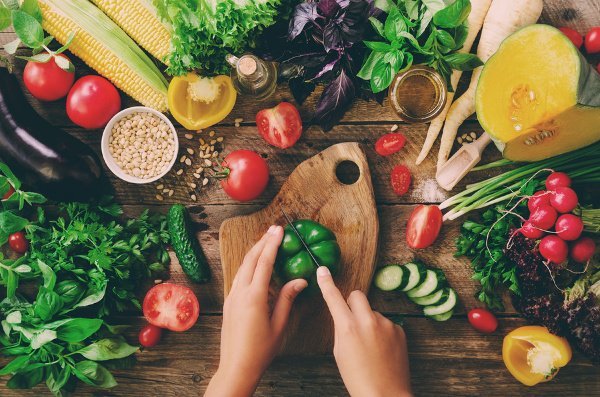The Blood Type Diet - Foods to Eat and Avoid Based on Your Blood Type
Your blood type matters in ways that might surprise you: It's tied to your risk of heart disease, how much you get bit by mosquitoes and more. There's even a diet based on blood type, which proposes that people with type O blood should focus on eating different foods than, say, those with type A or B. For example, people with blood type A are advised to avoid eating red meat, and those with type O are advised to do the opposite. The Blood Type Diet originally comes from the 1996 book Eat Right 4 Your Type, by naturopathic physician Dr. Peter D'Adamo, and has been kicking around various health forums for nearly three decades. The general thrust of the diet is that there are optimal foods for people with various blood types O, A, B and AB. Part of the theory hinges on the idea that blood types serve as maps of our ancestral history and genetics, and that the foods commonly eaten by our ancestors are better suited for our bodies, even in the modern day.
What Is the Blood Type Diet?
The idea behind the blood type diet is that there are certain foods you should eat that suit your blood type, making you healthier and helping you lose weight. The diet is designed to help people digest food more efficiently and avoid chemical reactions that lead to hormone disruptions. The blood type diet was created by a naturopathic physician named Dr. Peter J. D’Adamo. He believes blood causes a chemical reaction when mixed with a protein called lectin, found in certain foods.
There are four types of blood types, determined by your genetics: O, A, B and AB. The blood type diet is a way of eating that categorizes food as either beneficial, neutral or harmful based on a person’s blood type and other factors.
There’s a completely different diet for each blood type based on what each type can easily digest. Proponents of the blood type diet maintain that foods harmful to your blood type can cause an agglutination reaction, which makes blood cells stick together, increasing the risk of disease.
Type O Blood: 19 Foods to Eat and Avoid
It’s believed that people with type O blood can digest proteins and fats better than those with other blood types due to the fact that they have higher amounts of stomach acid. It’s recommended that they consume a high-protein diet, as well as supplements to help with stomach issues. They should avoid dairy, since it can lead to weight gain, inflammation and auto-immune responses.
10 Foods to Eat
1. Animal proteins such as beef, lamb, veal, mutton and venison
2. Fish
3. Most nuts
4. Grains including buckwheat, barley, rye, amaranth, Kamut, kasha, millet, spelt, and Ezekiel bread
5. Vegetables, including broccoli, spinach, kelp, tomatoes, artichoke, red peppers and sweet potatoes
6. Beans like aduke beans, azuki beans, pinto beans and black eyed peas
7. Fruits like plums, figs, grapefruit and most berries
8. Soy milk
9. Olive oil
10. Beverages including soda water, tea and wine
9 Foods to Avoid
1. Proteins including pork, goose, barracuda, pickled herring, catfish, smoked salmon, octopus, conch, and caviar
2. Dairy and eggs
3. Grains like corn, gluten, oat and farina
4. Legumes
5. Vegetables including Brussels sprouts, cauliflower, shiitake mushrooms, avocado and leek
6. Fruits such as melons, oranges, strawberries, blackberries and coconut
7. Kidney beans
8. Nuts including poppy seeds, brazil nuts, cashews, peanuts, and pistachios
9. Beverages like beer, coffee, distilled liquor, and black tea
Type A Blood: 29 Foods to Eat and Avoid
It’s recommended that people with A type blood eat an organic, vegetarian or almost-vegetarian food plan. You should restrict the amount of animal protein, but limited amounts of protein such as turkey and eggs are allowed.
12 Foods to Eat
1. Soy protein such as tofu
2. Grains including spelt, hulled barley, and sprouted bread
3. Walnuts, pumpkin seeds, and peanuts
4. Olive oil
5. Berries such as blueberries and elderberries
6. Certain beans and legumes
7. Vegetables, especially dark, leafy greens, such as kale, Swiss chard, and spinach
8. Garlic and onions
9. Ginger
10. Cold-water fish, such as sardines and salmon
11. Limited amounts of chicken and turkey
12. Green tea
17 Foods to Avoid
1. Beef
2. Pork
3. Lamb
4. Cow’s milk
5. Potatoes, yams, and sweet potatoes
6. Vegetables such as cabbage, eggplant, tomatoes, peppers, and mushrooms
7. Lima beans
8. Fruits, such as melons, oranges, strawberries, and mangos
9. Poultry other than chicken and turkey, such as duck
10. Venison
11. Fish, such as bluefish, barracuda, haddock, herring, and catfish
12. Certain grains and grain products, such as wheat bran, multigrain bread, and durum wheat
13. Refined sugar
14. Refined carbohydrates, such as white flour and white bread
15. Oils other than olive oil
16. Artificial ingredients
17. Most condiments
Type B Blood: 22 Foods to Eat and Avoid
If you have type B blood, it’s recommended that you eat plenty of meat and fish, fill up on green vegetables, eat eggs and low-fat dairy, and opt for oats and rice. You should avoid foods like wheat, corn, lentils, peanuts and tomatoes as these foods can compromise your metabolism, causing fluid retention, fatigue and hypoglycaemia.
11 Foods to Eat
1. Meat including goat, lamb, rabbit, and venison
2. Limited amounts of beef
3. Fish such as salmon, sardines, cod, halibut, mackerel, sea trout, sole and flounder
4. Green vegetables include broccoli, Brussels sprouts, kale, collard greens, beet leaves and mustard greens
5. Beets, yams, sweet potatoes, carrots, red and white cabbage, eggplant, parsnips and all types of peppers, including jalapeno and bell peppers
6. Dairy including yogurt, low- or nonfat milk, goat milk or cheeses such as mozzarella, ricotta, cottage, feta or farmer cheese
7. Eggs
8. Cereal grains such as oats, oat bran, rice bran, spelt and millet
9. Brown rice bread, rice cakes, Ezekiel or Essene bread and any other products made with oat or rice flour
10. Tea, especially liquorice tea and green tea as well as herbal teas containing peppermint, ginger, ginseng, sage, rose hips or raspberry leaf
11. Juices prepared from pineapple, grapes, papaya, cranberries or cabbage
11 Foods to Avoid
1. Meats including chicken, pork and duck
2. Shellfish like lobster, crab and shrimp
3. Fruits like coconuts and pomegranates
4. Vegetables including corn, tomatoes, avocados and pumpkin
5. Lentils
6. Wheat, including bread and pasta
7. Beans such as garbanzo beans and black beans
8. Cheese including blue cheese and American cheese
9. Condiments like ketchup
10. Spices including pepper
11. Distilled liquor, such as brandy, whiskey, rum, gin and vodka
Type AB Blood: 20 Foods to Eat and Avoid
People with type AB blood should follow a quasi-vegetarian diet that consists of primarily fruits and vegetables of all kinds. Breaking down meat requires a significant amount of hydrochloric acid in the stomach, which type AB doesn’t have. You should limit your meat intake, substituting it with proteins such as tofu. Your low stomach acid levels suggests smaller, more frequent meals throughout the day will be digested more completely than larger meals consumed less frequently.
7 Foods to Eat
1. Tofu
2. Limited amounts of lamb, mutton, rabbit and turkey
3. Seafood including tuna, cod, grouper, hake, mackerel, mahimahi, monk fish, ocean perch, pike, porgy, trout, red snapper, sailfish, pickerel, sardines, shad snail and sturgeon
4. Dairy products like yogurt, kefir, non-fat sour cream, eggs, mozzarella cheese, goat cheese, ricotta cheese and milk
5. Fruits such as plums, berries, grapes, pineapple, grapefruit, lemons, apricots and figs
6. Nuts and nut butters, especially peanuts and walnuts
7. Beans including lentils, navy, pinto, red and soybeans
13 Foods to Avoid
1. Meats like red meat bacon, beef, buffalo, ham, horse, pork, squirrel, sweetbreads, turtle, veal, venison
2. Vegetables including aloe, artichoke, caper, black/shiitake mushrooms, black olives, pickles, radishes/radish sprouts, rhubarb
3. Peppers like green, jalapeño, red, yellow
4. Fruits like avocado, bananas, bitter melon, coconut/coconut milk, dewberries, guava, mango, oranges, persimmons, pomegranate, prickly pear, quince, starfruit (carambola)
5. Grains including artichoke flour, buckwheat, cornmeal, grits, Kamut, sago palm, soba noodles, sorghum, tapioca, teff, wheat
6. Beans such as azuki, black, Vicki’s faba, garbanzo (chickpea), red kidney, lima, mung/mung sprouts
7. Nuts like hazelnuts
8. Duck eggs
9. Cheeses including blue, America, brie and parmesan
10. Dairy products like butter, ice cream, buttermilk and cow milk
11. Fruits like oranges and bananas
12. Condiments like mustard, red wine vinegar, balsamic vinegar and rice vinegar
13. Beverages like coffee, pop, distilled liquor and black teas
The blood type diet could be just what you need to feel healthier, more energized and reach your weight loss goals.
For Further Reading:
• WebMD has published an article on the ins-and-outs of the blood type diet at the link: https://www.webmd.com/diet/a-z/blood-type-diet
• "Diet not working? Maybe its not your type" is the helpful article by Harvard Medical School at: https://www.health.harvard.edu/blog/diet-not-working-maybe-its-not-your-type-2017051211678
• The blood type diet is the subject the article found at ABC.net, https://www.abc.net.au/everyday/what-is-the-blood-type-diet-and-does-it-work/11358524

